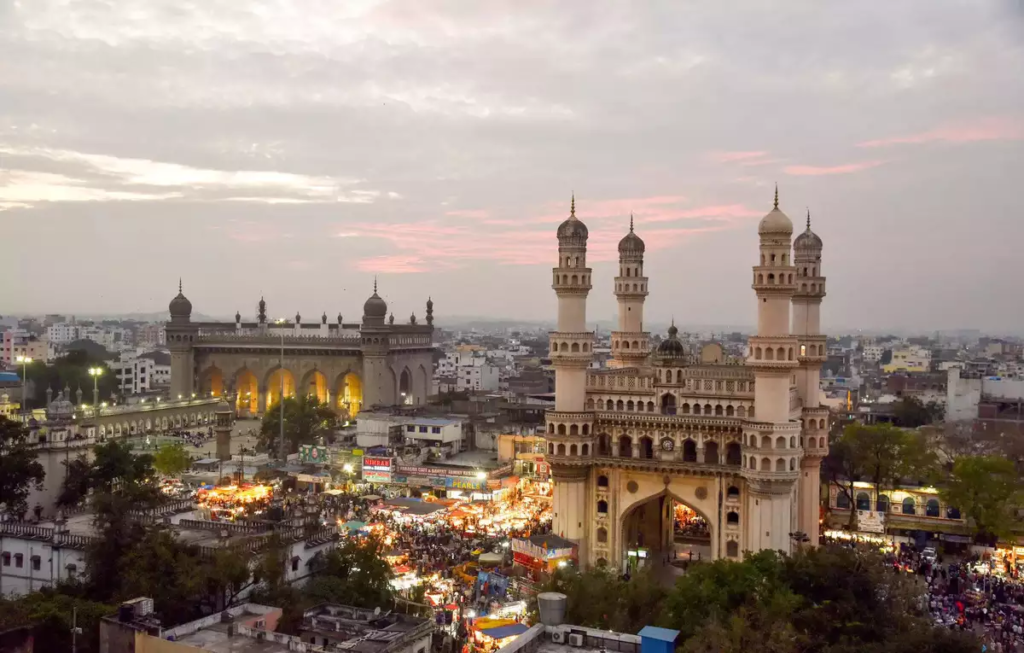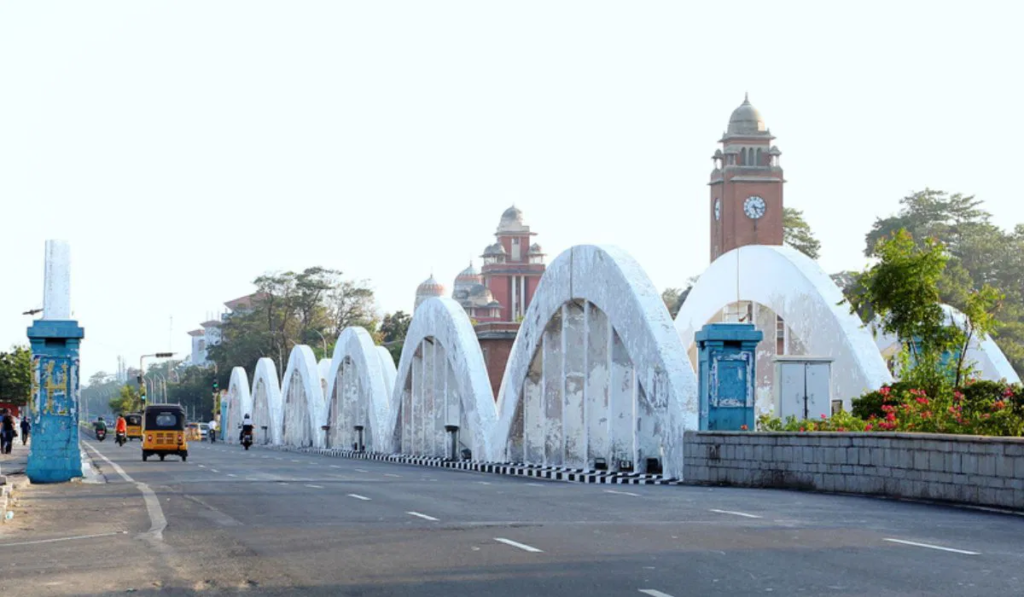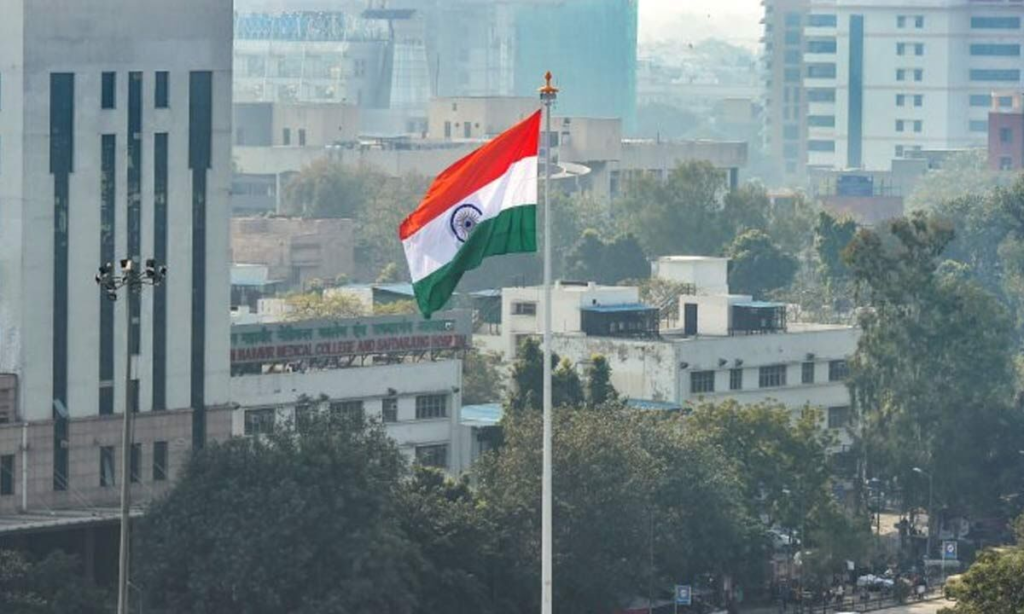Air Quality in India continues to be a serious concern, with the latest Air Quality Index (AQI) data from the India Meteorological Department (IMD) revealing stark contrasts between the northern and southern regions. While northern cities like Delhi, Kolkata, and Patna battle with moderate air quality, southern cities like Pune, Hyderabad, and Bengaluru are enjoying cleaner, healthier air.
Table of Contents
Delhi’s AQI at 165: Respiratory Risks for 20% of Residents
In Delhi, the AQI stood at 165 at 10 AM on Thursday, placing it in the “moderate” category. Though the air quality is deemed acceptable for most, it poses a significant risk to sensitive individuals, especially those with respiratory conditions. With surface winds from the Northwest/Southeast at 7.4 km/h, the pollutants are not dispersing quickly enough, leaving vulnerable populations at risk. Clear skies are expected throughout the day, but health advisories urge caution for individuals prone to respiratory issues.

| City | Region | AQI Level | Category | Health Concern |
|---|---|---|---|---|
| Delhi | Northern | 165 | Moderate | Respiratory risks for sensitive individuals |
| Kolkata | Northern | 161 | Moderate | Mild risk for sensitive individuals |
| Lucknow | Northern | 125 | Moderate | Discomfort for people with pre-existing conditions |
| Patna | Northern | 162 | Moderate | Potential health risks for vulnerable groups |
| Mumbai | Northern | 86 | Satisfactory | Low health risk, but dust and smog cause temporary discomfort |
| Ahmedabad | Northern | 82 | Satisfactory | Minimal health risks for the general population |
3 Major Northern Cities Continue to Struggle with AQI Levels Above 160
Northern cities like Kolkata (AQI 161), Patna (AQI 162), and Lucknow (AQI 125) are also facing moderate air quality. While not immediately dangerous, these levels could cause discomfort and health concerns for sensitive individuals, including children and the elderly. With winter approaching, pollution is likely to rise, exacerbating the situation in these regions.
Read this also: Reviving the Spirit: Celebrating 10 Years of Swachh Bharat Abhiyan
The persistent AQI levels above 160 in these cities indicate the need for urgent intervention to control emissions and protect public health, particularly as the festival season, known for its spike in pollution, draws closer.
Cleaner Air Down South: Hyderabad Leads with AQI of 49
In contrast, southern cities like Pune, Hyderabad, and Bengaluru are enjoying significantly better air quality. Hyderabad, with an AQI of 49, boasts the cleanest air among major Indian cities. The air is considered “good”, meaning there is little to no risk for the general population. Pune’s AQI of 64 also falls in the “satisfactory” category, posing minimal risks to residents.

Bengaluru is following closely with an AQI of 41, maintaining excellent air quality despite cloudy conditions and possible rainfall, which could further improve air conditions. These southern cities are benefiting from geographic and meteorological factors that help disperse pollutants, providing a stark contrast to the conditions faced in northern regions.
| City | Region | AQI Level | Category | Health Concern |
|---|---|---|---|---|
| Pune | Southern | 64 | Satisfactory | Minimal risk to residents |
| Hyderabad | Southern | 49 | Good | No significant health risks |
| Bengaluru | Southern | 41 | Satisfactory | No health risks |
| Chennai | Southern | 87 | Moderate | Mild risks for sensitive individuals |
Mumbai Faces Dust and Smog: AQI at 86
Mumbai, India’s financial capital, reported an AQI of 86 on Thursday morning, falling under the “satisfactory” category. However, patches of thick dust and smog were observed along the Eastern Freeway, particularly in the early morning hours, reducing visibility and causing temporary discomfort. The city’s hot and humid weather, coupled with weak winds, has allowed pollutants to accumulate. The forecast predicts partly cloudy skies with a chance of drizzle, which could help improve air quality slightly.
Read this also: World Tourism Day 2024: Celebrating “Tourism and Peace”
Chennai’s AQI at 87: Moderate Concerns
Chennai recorded an AQI of 87, placing it in the “moderate” range. While this is not a critical level, it may pose mild health risks for sensitive groups, such as individuals with asthma or other respiratory conditions. Overall, the city’s air quality remains better than many of its northern counterparts, but caution is still advised for vulnerable individuals.

5 Key Insights from India’s Air Quality Report
- Northern Cities Face Greater Risks: With AQI levels consistently above 160, cities like Delhi, Kolkata, and Patna continue to struggle with air pollution, affecting sensitive populations.
- Southern Cities Thrive: Pune, Hyderabad, and Bengaluru maintain cleaner air, demonstrating the benefits of favorable geographic conditions.
Read this also: Is World War 3 Looming? Israel-Iran Conflict Escalates as Middle East Boils Over
- Vulnerable Populations at Risk: Sensitive individuals in northern cities face increasing health threats, particularly as pollution levels rise in the winter months.
- Mumbai’s Temporary Air Quality Issues: Dust and smog are impacting Mumbai’s air quality, though the situation remains under control with satisfactory levels overall.
- Targeted Action Required: Immediate local-level strategies are needed in northern cities to control emissions, especially as seasonal factors like stubble burning loom.
Conclusion: Regional Divide in India’s Air Quality
The contrasting air quality in northern and southern India highlights the regional challenges the country faces in managing pollution. While southern cities benefit from natural factors that help disperse pollutants, northern cities continue to struggle with rising emissions and stagnant air.

As winter approaches, pollution levels are expected to increase, especially in northern cities, making it critical for local governments to step up measures to reduce emissions. The regional divide underscores the urgent need for targeted strategies to ensure cleaner air across the nation.









[…] Read this also: Air Quality Crisis: 6 Northern Indian Cities Struggle with Pollution, While Southern Cities Breathe … […]
[…] Read this also: Air Quality Crisis: 6 Northern Indian Cities Struggle with Pollution, While Southern Cities Breathe … […]
[…] Read this also: Air Quality Crisis: 6 Northern Indian Cities Struggle with Pollution, While Southern Cities Breathe … […]
[…] Read this also: Air Quality Crisis: 6 Northern Indian Cities Struggle with Pollution, While Southern Cities Breathe … […]